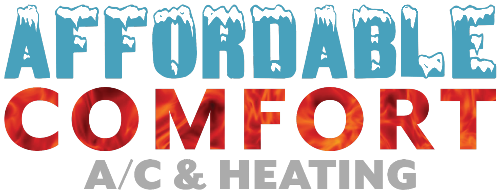Reasons Not to Add an Oversized Furnace
Furnaces quickly and evenly distribute the heat and promote good indoor air quality, but only if they are the appropriate size.
A well-maintained furnace can last between 15 and 20 years. However, homeowners will need a new unit if it's not powerful enough for the dwelling. Furnaces quickly and evenly distribute the heat and promote good indoor air quality, but only if they are the appropriate size.
Some homeowners may find it challenging to resist buying the biggest furnace they can afford. Let's explore several practical reasons not to oversize the new furnace:
Factors to consider for a new furnace purchase
Numerous factors influence how big a residential furnace should be, and the home's square footage is at the top of the list. For example, if the house is around 1,500 square feet, the furnace should be between 45,000 to 90,000 BTUs.
However, furnaces up to 150,000 BTUs are available on the market. Therefore, it might seem prudent to opt for a higher number.
Other factors that impact the sizing of the furnace include house orientation, floor plan, number of stories, number of household members, the home's age, ceiling height, ductwork quality, and sunlight exposure.
But what happens if the furnace is too big for a home?
More uneven heat distribution
If the furnace is too large for the home, the occupants may experience uneven comfort, as one room might heat better or faster than the other.
This problem may occur even when a furnace is proportional to the house. But with an oversized furnace, the discrepancy can be pretty dramatic.
Furthermore, if the thermostat is in a room that gets warmer faster, there's a risk of other rooms remaining cold.
Less efficient operation
It might seem nonsensical that a larger furnace can be less efficient, but it's possible. A furnace cannot reach peak performance until it goes through the warmup phase. However, this phase is something that an oversized furnace doesn't need. The more powerful furnace will rapidly push the warm air until the thermostat detects the difference and promptly shuts off. This inefficiency is impractical and can lead to increased energy bills.
Short cycling becomes an issue
An oversized furnace is more likely to overheat. That's because it produces more heat than a home needs, which results in heat build-up.
Overheating leads to short cycling or the furnace shuts off too quickly before the house reaches an optimal temperature. The constant short cycling leads to potential furnace damage and repair expenses.
Shorter lifespan of the unit
The short cycling and inefficiency will ultimately shorten the furnace's lifespan. Since a new furnace is a significant investment and the larger unit costs more, incorrectly sizing the furnace is not cost-effective.
Choose the correct furnace size
Before spending money on an expensive and oversized furnace, it's best to take a moment and do some research. As discussed above, the home's square footage and other factors help homeowners choose the correct furnace.
However, asking a reliable HVAC contractor to determine the correct size is the best move. A trustworthy heating system expert can assess a space and advise on the best furnace purchase.
Affordable Comfort A/C and Heating offers competitively priced residential and commercial heating services, including heating repair and maintenance, heating installation, furnace installation, furnace repair, furnace replacement, and furnace maintenance and tune-up. Talk to our experts at 602-574-1205.

